A Scaled-Down, but Still Angry, Women’s March Returns
The multi-city event, in its third year, attracts crowds defiant against Donald Trump despite internal tensions and shutdown chaos.WASHINGTON—Amid internal controversies and a capital city deeply distracted by the partial government shutdown, the third Women’s March returned to Washington on Saturday with an enduring message of anger and defiance aimed directly at President Donald Trump’s White House.
The original march in 2017, the day after Trump’s inauguration, flooded the city with pink-hatted protesters. The exact size of the turnout remains subject to a politically charged debate, but it’s generally regarded as the largest Washington protest since the Vietnam era.
This year was a more modest affair for multiple reasons. An estimated 100,000 protesters packed several blocks around Freedom Plaza, just east of the White House, holding a daylong rally. The march itself took about an hour and only moved about four blocks west along Pennsylvania Avenue past the Trump International Hotel before looping back to Freedom Plaza.
Organizers submitted a permit application estimating up to 500,000 participants even though it was widely expected that the turnout would be smaller. The original plan was to gather on the National Mall. But with the forecast calling for snow and freezing rain and the National Park Service no longer plowing snow because of the shutdown, organizers on Thursday changed the march’s location and route.
As it turned out the weather was chilly but otherwise pleasant, and the mood among the marchers a now-familiar mix of sister-power camaraderie and defiant anger toward Trump and the larger power structure. As always the Trump administration was the direct target of most of the abuse — with fresh bitterness stemming from more recent events like Supreme Court Justice Brett Kavanaugh’s successful confirmation last fall despite a direct accusation of sexual misconduct when he was in high school.
One sign declared, “Strong women only fear weak men.” Another stated, “MOOD: Still pretty mad about Kavanaugh.”
Parallel marches took place in dozens of cities around the country.
In Los Angeles, a few hundred demonstrators gathered in Pershing Square downtown and marched to Grand Park.
“Democracy is not a spectator sport and I came out to continue to stand for that proposition,” said Ellen Klugman of Marina Del Rey. “If I don’t go, who will?”
In Denver, protester Jacquelynn Sigl said it’s a mistake to focus solely on Trump.
“It’s not OK, the rhetoric the president has today, but it’s also important to know this isn’t an anti-Trump rally,” she said. “This isn’t about him. It’s about the thought that’s running across the country right now.”
Preparations for this year’s march were roiled by an intense ideological debate among the movement’s senior leadership. In November, Teresa Shook, one of the movement’s founders, accused the four main leaders of the national march organization of anti-Semitism.
The accusation was leveled at two primary leaders: Linda Sarsour, a Palestinian-American who has frequently criticized Israeli policies, and Tamika Mallory, who has maintained a public association with Nation of Islam leader Louis Farrakhan.
Shook, a retired lawyer from Hawaii, has been credited with sparking the movement by creating a Facebook event that went viral and snowballed into the massive protest on Jan. 21, 2017. In a recent Facebook post, she claimed Sarsour and Mallory, along with fellow organizers Bob Bland and Carmen Perez, had “steered the Movement away from its true course” and called for all four to step down.
The four march organizers have denied the charge, but Sarsour has publicly expressed regret that they were not “faster and clearer in helping people understand our values.”
Despite pleas for unity, the internal tensions were most keenly felt in New York. An alternate women’s march organization held a parallel rally a few miles away from the official New York Women’s March protest, and one activist actually disrupted the main protest.
As New York march director Agunda Okeyo was making her opening remarks, an activist named Laura Loomer came on stage and shouted that the march “does not represent Jewish people” and called it “the real Nazi march.”
Loomer is a longtime political provocateur whose previous protests have included handcuffing herself to a Twitter office after the service banned her and jumping a fence at a home owned by House Speaker Nancy Pelosi.
As Loomer was ushered from the stage, Okeyo challenged her.
“This is not a negative day,” Okeyo said. “You’re not coming with that. We’re not doing that today. What we’re doing today is we’re going to uplift each other and we’re going to make sure we stay positive.”
___
Associated Press writers Michael Sisak in New York, Dan Elliott in Denver and Daisy Nguyen in San Francisco contributed to this report.
Your support matters…Independent journalism is under threat and overshadowed by heavily funded mainstream media.
You can help level the playing field. Become a member.
Your tax-deductible contribution keeps us digging beneath the headlines to give you thought-provoking, investigative reporting and analysis that unearths what's really happening- without compromise.
Give today to support our courageous, independent journalists.
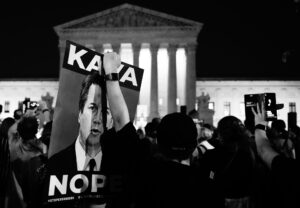
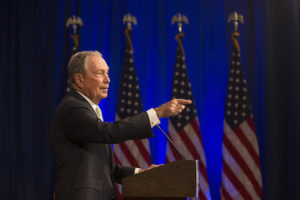
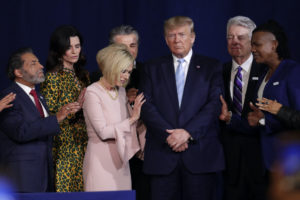
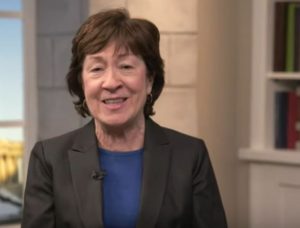

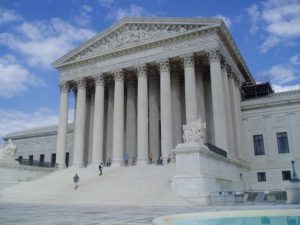
You need to be a supporter to comment.
There are currently no responses to this article.
Be the first to respond.